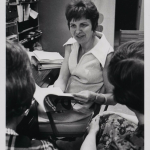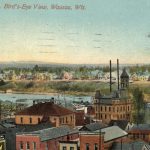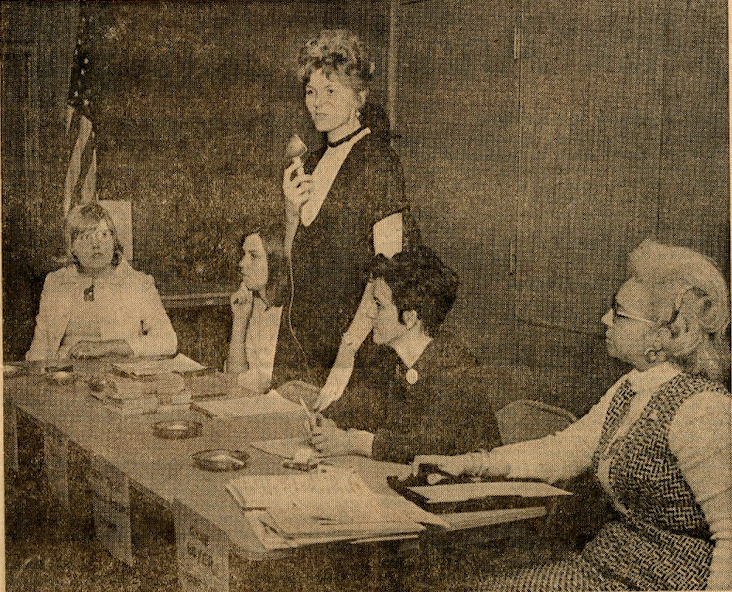
Source: “They Want Changes- NOW”. The Racine Journal Times, November 17, 1970.
In the early nineteen sixties, American women organized in pursuit of socio-political change and gender equality. In Wisconsin, women challenged inequitable policies and societal norms by organizing the Wisconsin Commission on the Status for Women and participating in the National Organization for Women (NOW). These female leaders combated practices that limited women’s independence from men by advocating for their right to have credit cards or mortgages registered in their own names and to establish better employment protections for women.
In 1963, President Kennedy created a federal commission on the status of women to explore women’s issues. Following Kennedy’s example, individual states also developed their own commissions to tackle inequality at the state level. The most popular topics of conversation were women’s employment, easier access to divorce, and equal status in property ownership. Kathryn Clarenbach, an administrator at UW-Madison was selected to chair the Wisconsin Commission on the Status for Women. Clarenbach had lived in Washington, DC and had worked on Henry Wallace’s unsuccessful campaign for the Democratic presidential nomination in 1948. She also had experience in academic administration at Alverno and Edgewood Colleges in Milwaukee and Madison, respectively.[1]
In 1966, during the third conference of the Wisconsin Commission on the Status for Women, members aired their grievances against the Equal Employment Opportunities Commission (EEOC), a federal agency established by the Civil Rights Act of 1964. In the opinion of the women on the Wisconsin Commission, the EEOC did not adequately address sex-based discrimination in the workplace. They hoped that real change might come by exerting additional pressure on the federal agency. Determined to focus the attention of federal officials on women’s issues, a group of 28 women, eight of whom were from Wisconsin, formed the National Organization for Women. Later that year, members of the organization finalized the official bylaws and held their first conference.
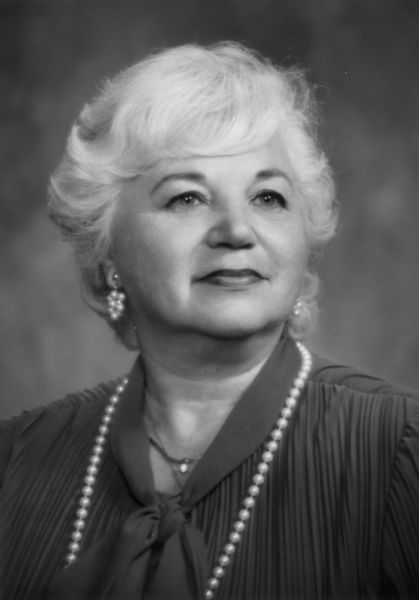
By late October, NOW could claim 300 women and men as members, 120 of whom were Wisconsinites.[2] NOW’s work attracted nationwide attention and local feminist organizations from Wisconsin formed local NOW chapters. The first woman to do so was Gene Boyer, who was involved with the Wisconsin Status on the Commission on Women and the formation of NOW.[3]
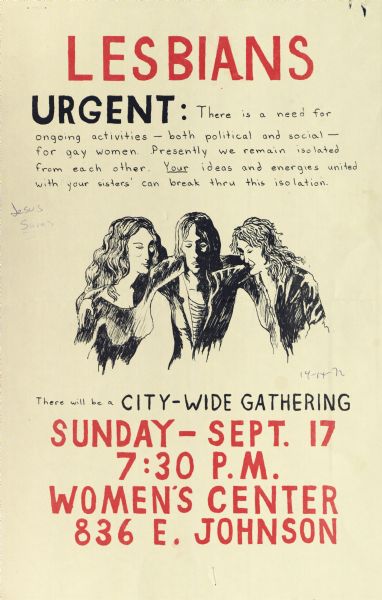
In its push to end sex discrimination in employment, NOW began to work with the EEOC to open more positions in the workplace to women. The Civil Rights Act of 1964 had permitted employers to use what Title VII of the Civil Rights Act defined as a “Bona Fide Occupational Qualification” to restrict jobs to people having particular qualifications, including controversial criteria such as sex, race and ethnic identity and religion. As NOW saw it, this provision opened a huge legal loophole that employers could use to discriminate against women who sought to enter certain occupations that had traditionally been limited to men. Gradually NOW persuaded the EEOC to restrict the use of the Bona Fide provision in the Civil Rights Act, and this gave women the chance to work in a greater number of jobs than had been the case previously.
A second difficult issue that NOW faced in its early years was the status of lesbians in the women’s movement. Betty Friedan, NOW’s first president, believed that advocacy for issues of interest to lesbians distracted from NOW’s central concerns. For their part, prominent lesbians among NOW’s membership argued that an organization calling itself an organization of women could hardly keep lesbians outside the tent. Eventually Friedan backed away from her position, in 1971, NOW began to include lesbian rights in its official policy positions.
As the Women’s Liberation Movement grew in popularity throughout the 1970s, NOW continued to advocate for women’s rights by planning a march for the Equal Rights Amendment (ERA), which passed Congress in 1972. Their work also encompassed abortion rights and other family planning concerns and the creation of child care centers that operated twenty-four hours a day, so that women with young children could work.[4]
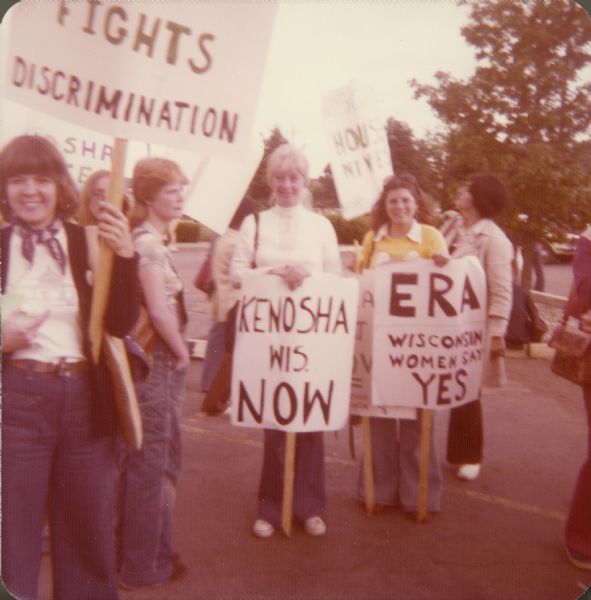
Today, NOW strives to solve a myriad of contemporary women’s issues, such as racial discrimination, body image, and representation of women in the media. The foundation has continued to adapt in order to serve the current generation of women.[5]
Written by Keeley Flynn, August 2021.
FOOTNOTES
[1] Kathryn F Clarenbach, interview by Margaret Andreasen (Madison, WI, UW-Madison Campus Voices, 1987).
[2] Ibid.
[3] Gene Boyer Papers, Box 1, Folder 17, 1966-1972, Wisconsin Historical Society.
[4] “National Organization for Women,” August 19, 2021, https://now.org/now-foundation/about-now-foundation/.
[5] Ibid.
RELATED STORIES
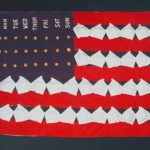
OBJECT HISTORY: The Land of the Freed-up Woman
